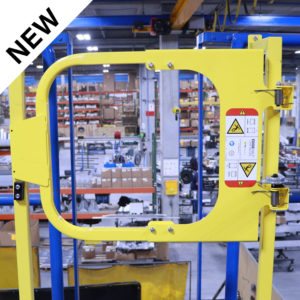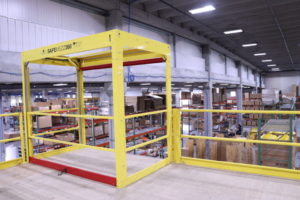
Work for any length of time in the business of keeping workers safe, and you will become familiar with a large number of acronyms that represent safety-based organizations or programs, some of which provide government oversight and others that offer private certification. To the rest of the workforce, though, these acronyms represent an arcane and challenging dilemma – everybody knows that acronym-named organizations like OSHA are important, but they would be hard-pressed to explain what they do.
The Facts:
For companies/manufacturers working mainly in North America and Europe, there are four main safety entities to be aware of, all of which contain acronyms as the basis for their names.
OSHA
This is the one that all American workers have heard of, but rarely understand. OSHA stands for the Occupational Safety and Health Administration, and it was established in 1970 through an act of Congress with pretty much the same name. OSHA is part of the United States Department of Labor and its mission is “to ensure safe and healthful working conditions for workers by setting and enforcing standards and by providing training, outreach, education and assistance.”
That’s a big job, and to accomplish it, OSHA publishes and updates standards for every kind of business – but especially businesses like factories where there is a significant risk of worker injury. They also enforce these standards through fines, some of which can be heavy. For obvious reasons, OSHA concentrates a lot on elevated platforms, areas where dangerous machines are present and other locations where the risks for workers are high.
OSHA also helps with training so fewer people get hurt and more companies achieve compliance. Finally, it’s worth noting that some state OSHA offices have actually implemented even stricter standards than their national counterparts. Examples include California, Michigan, Oregon and Washington.
Canadian COHS
The Canadian Centre for Occupational Health and Safety (CCOHS) not only has a similar name to its American counterpart, it has a similar mission. Specifically, it is Canada’s national resource for the advancement of workplace health and safety. It provides both legislation and enforcement for businesses in Canada that need to be compliant. It also provides resources and information in both English and French.
CE
The Conformitè Europëenne Mark (CE for short) is the European Union’s mandatory conformity mark used to indicate that a product meets the necessary safety, health and environmental protection requirements needed to be distributed throughout the EEA (European Economic Area). Each member of the EU is bound by the General Product Safety Directive to adopt laws, regulations and administrative provisions that ensure that products placed on the market are safe.
For products for which EU specifications exist, CE marking is mandated in order for that product to be sold in the EU.
ANSI
The American National Standards Institute is different than the organizations covered above. Rather than being associated with the government, ANSI is a nonprofit organization that oversees voluntary standards in the U.S. While the standards ANSI sets forth are voluntary, they are also incredibly stringent – often exceeding the standards established by OSHA. ANSI’s standards ensure that the product characteristics and performance are consistent, that people use the same definitions and terms, and that tests are performed in the same way.
The Challenge:
Different organizations, industries and governing bodies require their own standards and compliance. Many situations are unique, but they all share something in common: a commitment to keeping workers safe from falls, accidents and injuries.
How can you as a business leader ensure that your facility meets the standards required to protect your team?
The Solution:
 PS Safety Access™ manufactures a variety of products designed to keep your company compliant and your people safe, whether you have locations in the United States, Canada or the European Union.
PS Safety Access™ manufactures a variety of products designed to keep your company compliant and your people safe, whether you have locations in the United States, Canada or the European Union.
To keep workers safe on ladderways, for example, the majority of our EdgeHalt® Ladder Safety Gates meet or even exceed loading requirements set forth by OSHA, Canadian COHS and ANSI. The EdgeHalt Adjustable Safety Gate is OSHA, Canadian COHS and ANSI compliant and carries the CE Mark as well.
 If those ladderways lead to elevated platforms, our EdgeSafe® Safety Railing offers protection that meets OSHA, Canadian COHS and ANSI standards. Our SafeMezz® Mezzanine Gates also offer superior fall protection without sacrificing productivity. These gates meet OSHA standards, and the innovative SafeMezz360™ goes even further, with code compliance that meets OSHA, Canadian COHS and ANSI standards. It has also earned the CE Mark for the EU.
If those ladderways lead to elevated platforms, our EdgeSafe® Safety Railing offers protection that meets OSHA, Canadian COHS and ANSI standards. Our SafeMezz® Mezzanine Gates also offer superior fall protection without sacrificing productivity. These gates meet OSHA standards, and the innovative SafeMezz360™ goes even further, with code compliance that meets OSHA, Canadian COHS and ANSI standards. It has also earned the CE Mark for the EU.
These are just a few of the products that PS Safety Access makes that help businesses like yours achieve regulatory compliance, an important step in keeping your workers safe on the job. Interested in learning the specifics about how PS Safety Access can help your business? Contact us today by clicking here or call us at 877-446-1519.